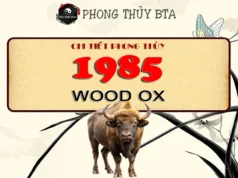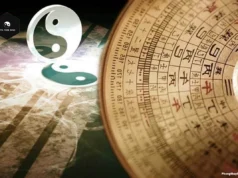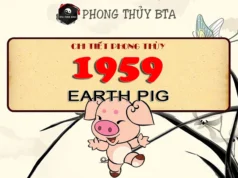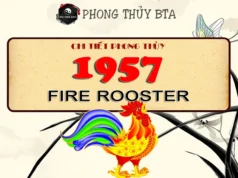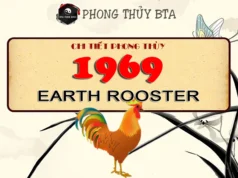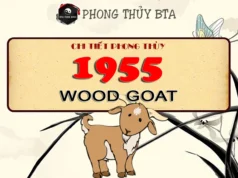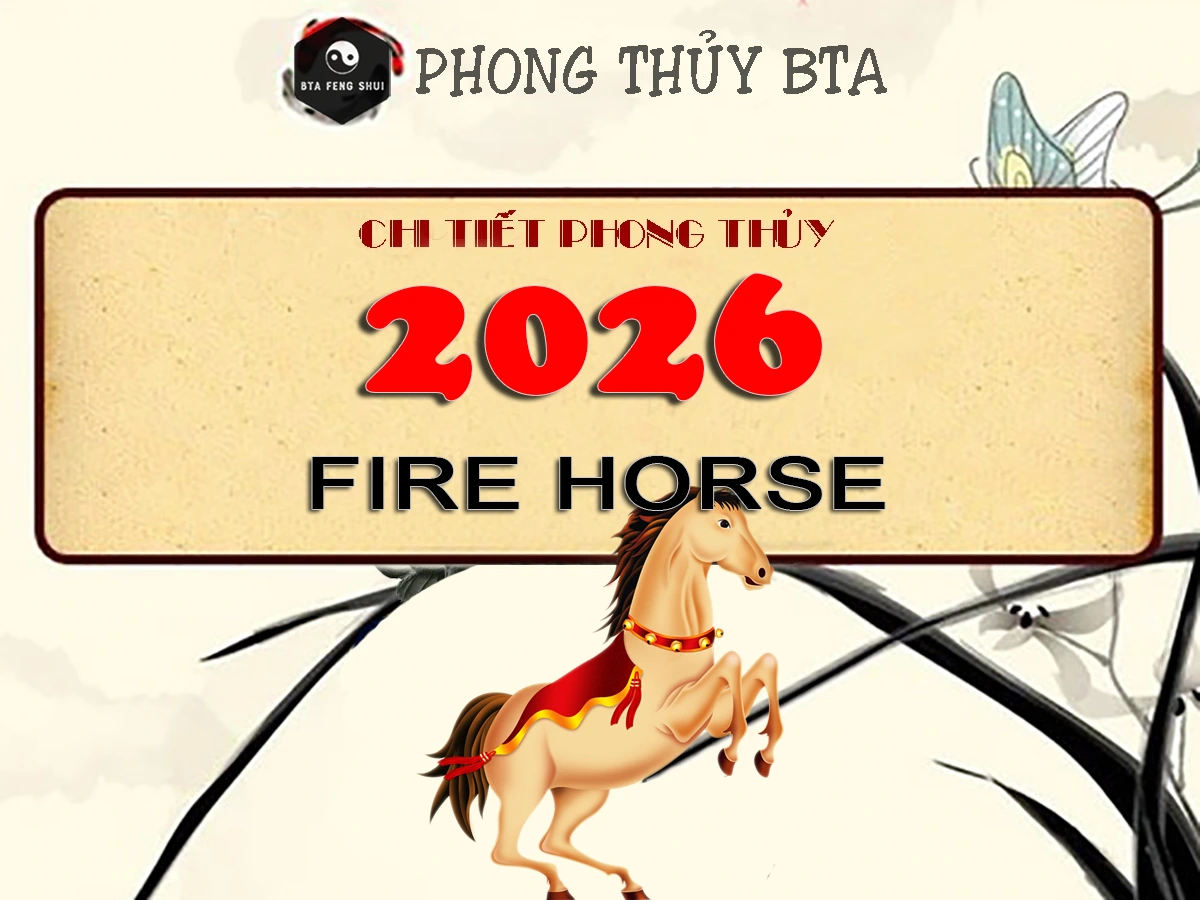The sexagenary cycle, a cornerstone of Chinese metaphysics, weaves together the ten Heavenly Stems and twelve Earthly Branches to form a 60-year cycle that influences time, energy, and destiny. Known as the “Chinese cycle” or “stem-branch cycle,” this ancient system shapes feng shui practices, astrology, and cultural traditions.
At BTA Feng Shui, we delve into its profound significance, offering insights to harness its energy for harmony and balance.
What Is the Sexagenary Cycle?
The sexagenary cycle is a 60-year calendrical system rooted in Chinese tradition, combining ten Heavenly Stems (e.g., Jia, Yi) and twelve Earthly Branches (e.g., Zi, Chou). Each year is represented by a unique stem-branch pair, starting with Jia Zi (Yang Wood Rat) and ending with Gui Hai (Yin Water Pig). This cycle, also called a “Jia Zi,” governs not only timekeeping but also feng shui, astrology, and life decisions.
Unlike Western calendars, the sexagenary cycle integrates the five elements (Wood, Fire, Earth, Metal, Water) and yin-yang principles, creating a dynamic framework for understanding cosmic influences. Its origins trace back to the Shang Dynasty (c. 1100 BC), where it was used to record days on oracle bones, later evolving to mark years by the Han Dynasty.
The Heavenly Stems and Earthly Branches
Heavenly Stems
The ten Heavenly Stems represent the five elements, each in yin and yang forms:
- Jia (Yang Wood) – Growth, vitality
- Yi (Yin Wood) – Flexibility, nurturing
- Bing (Yang Fire) – Passion, transformation
- Ding (Yin Fire) – Warmth, clarity
- Wu (Yang Earth) – Stability, grounding
- Ji (Yin Earth) – Nurturing, balance
- Geng (Yang Metal) – Strength, precision
- Xin (Yin Metal) – Refinement, sensitivity
- Ren (Yang Water) – Flow, adaptability
- Gui (Yin Water) – Intuition, depth
These stems cycle every ten years, infusing each year with elemental energy.
Earthly Branches
The twelve Earthly Branches correspond to the Chinese zodiac animals and Jupiter’s 12-year orbit:
- Zi (Rat) – 23:00–01:00
- Chou (Ox) – 01:00–03:00
- Yin (Tiger) – 03:00–05:00
- Mao (Rabbit) – 05:00–07:00
- Chen (Dragon) – 07:00–09:00
- Si (Snake) – 09:00–11:00
- Wu (Horse) – 11:00–13:00
- Wei (Goat) – 13:00–15:00
- Shen (Monkey) – 15:00–17:00
- You (Rooster) – 17:00–19:00
- Xu (Dog) – 19:00–21:00
- Hai (Pig) – 21:00–23:00
Each branch aligns with a time of day and a zodiac sign, influencing daily energy patterns.
How They Combine
The sexagenary cycle pairs stems and branches in a yin-yang harmony, with only yang stems pairing with yang branches (e.g., Jia Zi) and yin stems with yin branches (e.g., Yi Chou). This results in 60 unique combinations, as the least common multiple of 10 and 12 is 60, excluding mismatched yin-yang pairs.
=> See more:
- Chinese Zodiac Years Chart: Find Your Exact Zodiac Sign and Dates
- Celestial Stems and Earthly Branches Clashes
The 60-Year Cycle: A Detailed Table
The table below shows the full 60-year sexagenary cycle, starting from Jia Zi (甲子) in 1924 and 1984. It includes each year’s stem-branch, zodiac sign, element, yin/yang, and matching Gregorian years. This is a helpful guide for anyone interested in feng shui, astrology, or understanding the Chinese calendar—brought to you by BTA Feng Shui.
| No. | Stem-Branch | Gregorian Years | Zodiac Sign | Element | Yin/Yang |
|---|---|---|---|---|---|
| 1 | Jia Zi (甲子) | 1924, 1984 | Rat | Wood | Yang |
| 2 | Yi Chou (乙丑) | 1925, 1985 | Ox | Wood | Yin |
| 3 | Bing Yin (丙寅) | 1926, 1986 | Tiger | Fire | Yang |
| 4 | Ding Mao (丁卯) | 1927, 1987 | Rabbit | Fire | Yin |
| 5 | Wu Chen (戊辰) | 1928, 1988 | Dragon | Earth | Yang |
| 6 | Ji Si (己巳) | 1929, 1989 | Snake | Earth | Yin |
| 7 | Geng Wu (庚午) | 1930, 1990 | Horse | Metal | Yang |
| 8 | Xin Wei (辛未) | 1931, 1991 | Goat | Metal | Yin |
| 9 | Ren Shen (壬申) | 1932, 1992 | Monkey | Water | Yang |
| 10 | Gui You (癸酉) | 1933, 1993 | Rooster | Water | Yin |
| 11 | Jia Xu (甲戌) | 1934, 1994 | Dog | Wood | Yang |
| 12 | Yi Hai (乙亥) | 1935, 1995 | Pig | Wood | Yin |
| 13 | Bing Zi (丙子) | 1936, 1996 | Rat | Fire | Yang |
| 14 | Ding Chou (丁丑) | 1937, 1997 | Ox | Fire | Yin |
| 15 | Wu Yin (戊寅) | 1938, 1998 | Tiger | Earth | Yang |
| 16 | Ji Mao (己卯) | 1939, 1999 | Rabbit | Earth | Yin |
| 17 | Geng Chen (庚辰) | 1940, 2000 | Dragon | Metal | Yang |
| 18 | Xin Si (辛巳) | 1941, 2001 | Snake | Metal | Yin |
| 19 | Ren Wu (壬午) | 1942, 2002 | Horse | Water | Yang |
| 20 | Gui Wei (癸未) | 1943, 2003 | Goat | Water | Yin |
| 21 | Jia Shen (甲申) | 1944, 2004 | Monkey | Wood | Yang |
| 22 | Yi You (乙酉) | 1945, 2005 | Rooster | Wood | Yin |
| 23 | Bing Xu (丙戌) | 1946, 2006 | Dog | Fire | Yang |
| 24 | Ding Hai (丁亥) | 1947, 2007 | Pig | Fire | Yin |
| 25 | Wu Zi (戊子) | 1948, 2008 | Rat | Earth | Yang |
| 26 | Ji Chou (己丑) | 1949, 2009 | Ox | Earth | Yin |
| 27 | Geng Yin (庚寅) | 1950, 2010 | Tiger | Metal | Yang |
| 28 | Xin Mao (辛卯) | 1951, 2011 | Rabbit | Metal | Yin |
| 29 | Ren Chen (壬辰) | 1952, 2012 | Dragon | Water | Yang |
| 30 | Gui Si (癸巳) | 1953, 2013 | Snake | Water | Yin |
| 31 | Jia Wu (甲午) | 1954, 2014 | Horse | Wood | Yang |
| 32 | Yi Wei (乙未) | 1955, 2015 | Goat | Wood | Yin |
| 33 | Bing Shen (丙申) | 1956, 2016 | Monkey | Fire | Yang |
| 34 | Ding You (丁酉) | 1957, 2017 | Rooster | Fire | Yin |
| 35 | Wu Xu (戊戌) | 1958, 2018 | Dog | Earth | Yang |
| 36 | Ji Hai (己亥) | 1959, 2019 | Pig | Earth | Yin |
| 37 | Geng Zi (庚子) | 1960, 2020 | Rat | Metal | Yang |
| 38 | Xin Chou (辛丑) | 1961, 2021 | Ox | Metal | Yin |
| 39 | Ren Yin (壬寅) | 1962, 2022 | Tiger | Water | Yang |
| 40 | Gui Mao (癸卯) | 1963, 2023 | Rabbit | Water | Yin |
| 41 | Jia Chen (甲辰) | 1964, 2024 | Dragon | Wood | Yang |
| 42 | Yi Si (乙巳) | 1965, 2025 | Snake | Wood | Yin |
| 43 | Bing Wu (丙午) | 1966, 2026 | Horse | Fire | Yang |
| 44 3 | Ding Wei (丁未) | 1967, 2027 | Goat | Fire | Yin |
| 45 | Wu Shen (戊申) | 1968, 2028 | Monkey | Earth | Yang |
| 46 | Ji You (己酉) | 1969, 2029 | Rooster | Earth | Yin |
| 47 | Geng Xu (庚戌) | 1970, 2030 | Dog | Metal | Yang |
| 48 | Xin Hai (辛亥) | 1971, 2031 | Pig | Metal | Yin |
| 49 | Ren Zi (壬子) | 1972, 2032 | Rat | Water | Yang |
| 50 | Gui Chou (癸丑) | 1973, 2033 | Ox | Water | Yin |
| 51 | Jia Yin (甲寅) | 1974, 2034 | Tiger | Wood | Yang |
| 52 | Yi Mao (乙卯) | 1975, 2035 | Rabbit | Wood | Yin |
| 53 | Bing Chen (丙辰) | 1976, 2036 | Dragon | Fire | Yang |
| 54 | Ding Si (丁巳) | 1977, 2037 | Snake | Fire | Yin |
| 55 | Wu Wu (戊午) | 1978, 2038 | Horse | Earth | Yang |
| 56 | Ji Wei (己未) | 1979, 2039 | Goat | Earth | Yin |
| 57 | Geng Shen (庚申) | 1980, 2040 | Monkey | Metal | Yang |
| 58 | Xin You (辛酉) | 1981, 2041 | Rooster | Metal | Yin |
| 59 | Ren Xu (壬戌) | 1982, 2042 | Dog | Water | Yang |
| 60 | Gui Hai (癸亥) | 1983, 2043 | Pig | Water | Yin |
Note: The sexagenary cycle restarts in 2044 with Jia Zi (甲子), continuing the sequence from 1984. Gregorian years align with the Chinese Lunar New Year or the solar term Lichun (around February 4), which may slightly vary.
The Sexagenary Cycle in Feng Shui
In feng shui, the sexagenary cycle guides practitioners in aligning spaces with cosmic rhythms. Each year’s stem-branch pair carries specific elemental and energetic qualities, influencing decisions like home orientation, furniture placement, and personal rituals.
Practical Applications
- Annual Feng Shui Adjustments: The 2025 year, Yi Si (Yin Wood Snake), emphasizes flexibility and transformation. Wood energy encourages growth, while the Snake’s introspective nature calls for subtle, strategic changes in your space.
- Tai Sui Influence: Each year is governed by a Tai Sui deity, linked to the Earthly Branch. In 2025, the Snake’s Tai Sui suggests caution in renovations or groundbreaking in conflicting directions (e.g., northeast).
- Personal Destiny Analysis: Your birth year’s stem-branch pair reveals your elemental profile, guiding career, relationship, and health decisions. For example, a Jia Zi (Wood Rat) native thrives in dynamic, creative environments.
Historical and Cultural Significance
The cycle’s cultural weight is evident in traditions like the Chinese huan jia or Japanese kanreki, celebrating a 60th birthday as a full cycle’s completion. Historically, it marked significant events, such as the Xinhai Revolution (1911, Xin Hai). Its use in oracle bones and Han Dynasty records underscores its enduring reliability.



